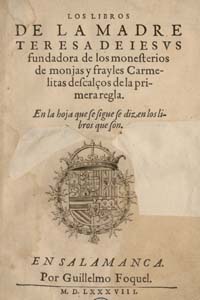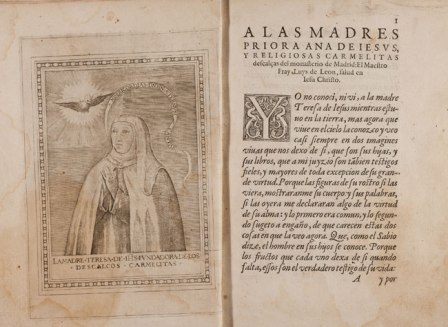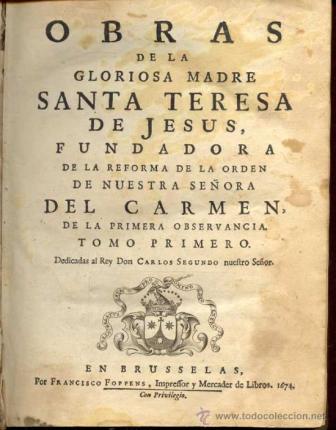8 October 2014
Global Seminars & Invited Speaker Series
V CENTENARY OF SAINT TERESA: ART, HERITAGE AND SPIRITUALITY AROUND SAINT TERESA
The literary production of Saint Teresa
D. Carlos Mata Induráin
GRISO. University of Navarra
As Juan Luis Alborg reminds us, "Teresa of Jesus is a late writer. Undertook the literary task in the twilight of his life. She finished her first book - La Vida - at the age of 50 (1565)" . She was also a writer by obedience, as she would point out on numerous occasions in her works, who always wanted to write in a "hermit's style". And although she did not frequent the university classrooms, she was always hungry for knowledge: "It is a great thing letters", she would say (where letters means 'to know').
The work of St. Teresa of Jesus (1515-1582) must be placed in the panorama of prose - and to a lesser extent poetry - of the 16th century, specifically in the field of ascetic-mystical literature. In fact, her figure is placed alongside that of Dominican writers such as Fray Luis de Granada, the famous author of guide de pecadores ( Lisbon, 1566) and Introducción del Símbolo de la fe ( 1583); Franciscan mystics such as Fray Diego de Estella or Fray Juan de los Ángeles; Augustinian writers such as Fray Pedro Malón de Echaide, author of La conversión de la Madalena, and even more concretely he must be placed in the sphere of Carmelite mysticism, where his figure is paired with that of another colossus, St. John of the Cross.
With a didactic purpose, the manuals of the history of literature, and the scholars of St. Teresa, divide her literary production in two sections: the autobiographical books (more linked to her activity as a reformer and to her personal mystical experiences), on the one hand; and on the other hand, the more ascetic and mystical works, although the characteristics are mixed in both (in the autobiographical books there are ascetic-mystical moments, and vice versa, the more doctrinal ones are not exempt from the biographical component). The autobiographical books of St. Teresa of Jesus are the Book of Life, the Book of Foundations and the Book of Relations, to which we must add the Issue that make up her Letters. The second group, that of the doctrinal books, is formed by Camino de perfección and Castillo interior or Las Moradas. Other minor works and his poetry should also be considered.

The Books of Mother Teresa of Jesus (Salamanca, 1588)

Dedication to The Books of Mother Teresa of Jesus (Salamanca, 1588)

Works of the Glorious Mother Saint Theresa of Jesus (Brussels, 1674)
The main characteristics of the literary style of Saint Teresa of Jesus are simplicity and sincerity. Her prose is written in a colloquial Spanish; she did little retouching of her writings, which always have the appearance of spontaneity, of prose written with great ease. His is, in fact, an ascetic, simple, unadorned prose, which has the apparent carelessness of spoken prose. At final, his style stands out for its expressiveness, grace and delicacy, which are exceptional.
